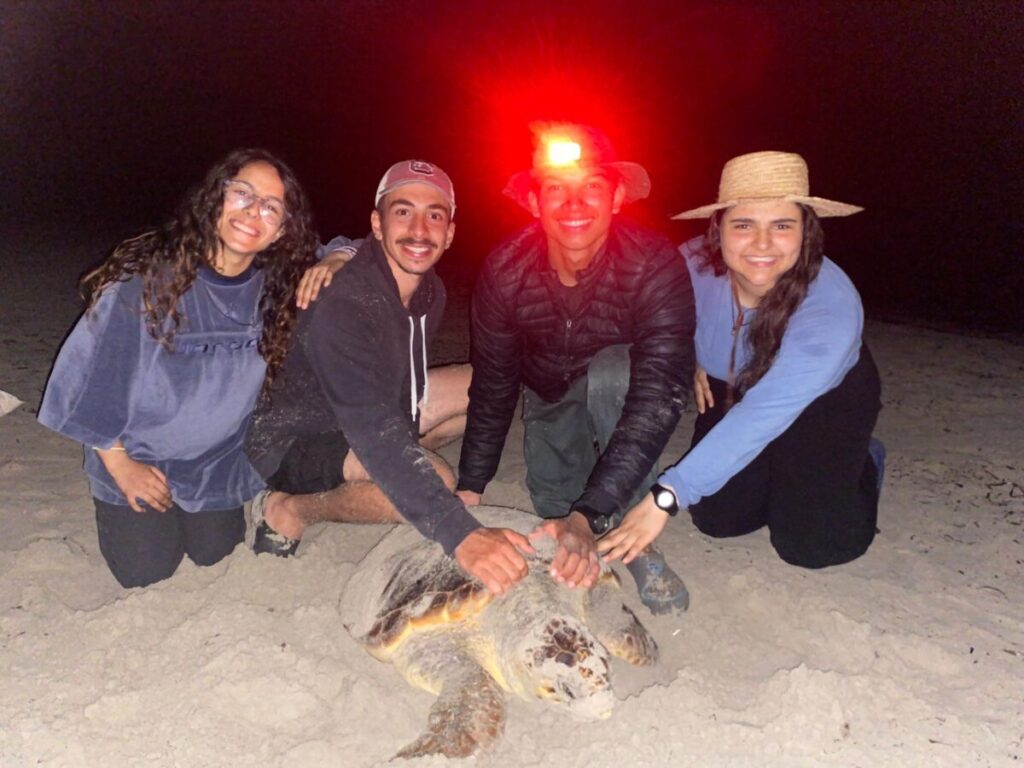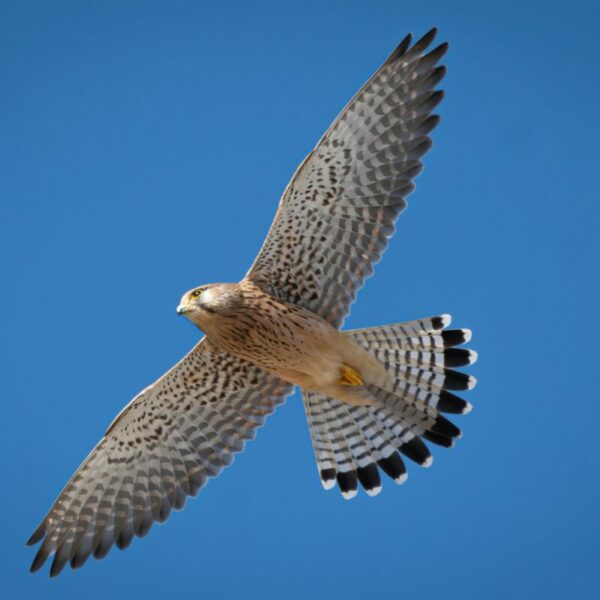Protection of raptors, sea and land turtles, as well as reptiles and foxes, citizen initiatives strive to raise awareness about the protection of wildlife and flora. It is in Tunisia, the third migratory route in the Mediterranean for nearly 40,000 birds. A country that also has 42 Ramsar wetland areas, essential for biodiversity conservation.
In 2024, on social media, photos of a white tiger roaming free in the city of Sfax in the east of the country create a buzz and concern. A few days later, it is shot by the police. This episode deeply shocked nature lovers, like Habib Rekik, a member of the Tunisian Wildlife Association (ATVS).
The feline had been illegally imported from Libya to be kept as a pet. In Tunisia, poaching and the illegal trafficking of rare species are rampant. The cause is the exchanges on social media and smuggling from Libya or Algeria. Thanks to the association, reports are constantly flooding in regarding endangered or abandoned species.
Trafficking, illegal imports, and tourist attractions
The General Directorate of Forests also carries out numerous seizures, which it then entrusts to a group of volunteers, due to a lack of rehabilitation centers. “ We sometimes receive alerts about species that are too large to be kept, like ostriches, or animals that cannot be released here because their original habitat is elsewhere,” specifies Habib Rekik, a young engineer passionate about wildlife who joined ATVS four years ago.
In the recent case of an Egyptian vulture from Niger, the organization will have to carry out a CITES transfer (Convention on International Trade in Endangered Species of Wild Fauna and Flora) for the first time to release it in its home country. “ This is a first for us. It also shows that we are increasingly able to create connections and raise awareness about the need to preserve wildlife and flora,” emphasizes Habib.
In Tunisia, many species, particularly raptors, are threatened by poaching and recreational breeding for tourism needs. “ Unfortunately, we see this every day in tourist spots, with merchants offering to take photos with a falcon ” indicates Ridha Ouni, an ornithologist and also a member of the association. These falcons, whether peregrines or lanners, are often captured as chicks, then trained to become tourist attractions. Their wings are clipped, and many can no longer fly.
Rehabilitation and release
“ When the forestry department brings them to us, we place them in aviaries. Sometimes, it takes up to two years before we can release them. It takes time for their wings to regenerate ” specifies Ridha Ouni. She adds that the release also requires an adaptation period “ many have never known life in the wild, so we have to teach them to hunt their prey and eat forest animals ”. This rehabilitation takes place on a farm in Sidi Thabet, on the outskirts of Tunis, where foxes, fennecs, wolves, and various raptors are welcomed, with the support of volunteer veterinarians.
The golden eagle, an endangered species with only about fifty pairs, is also a victim of poaching. The collective recently released one individual in the hills of Cap Bon. It had been confiscated from its owner in 2024. This specimen, named “Aquila,” is the fourth large raptor released in two years as part of the program. In 2022, another organization, L’Ami des oiseaux, had released “Watan,” another rehabilitated golden eagle after three years, in the Siliana region in the north of the country.
The releases of raptors occur during the migratory period, “ so that they can leave without the risk of being captured, which would be more likely during the breeding season,” explains Ridha Ouni. “ We also conduct numerous banding operations to allow for monitoring of released species, in coordination with the forestry department and with other associative structures specialized in wildlife observation or falconry, for example ,” adds Habib Rekik.
Turtles, reptiles, and snakes
Even though the AVTS collaborates with public institutions to better protect wildlife in Tunisia, the young engineer believes that awareness-raising work still needs to be done. “ When you see in souks like those of Moncef Bey, right in Tunis, many exotic or wild species exposed for sale, it’s unfortunate ,” comments this nature enthusiast.
Beyond raptors, the team also takes care of species affected by climate change. “We recently rescued freshwater turtles. They need to be moved to other lakes because their original habitat has suffered from lack of water and pollution,” specifies Habib, who is preparing a release operation for about 200 turtles. Earlier this month, an expedition of scientists in southern Tunisia discovered many dead reptiles trapped in dried wells. “ We learn more every day about endangered species, and we try to raise awareness as best as we can ” he emphasizes. He is also about to attend a week-long international training in Oman on wildlife protection in the event of natural disasters.
Sea turtles too
The ATVS is not the only one working for animal protection. In recent years, the cause of sea turtles has gained visibility thanks to the commitment of the association Notre Grand Bleu, in the governorate of Monastir, in the east-central part of the country. Since 2012, this entity has been working on the rehabilitation of loggerhead turtles “caretta caretta,” facilitating their return to the Kuriat Islands, their natural nesting site.
These islands, already considered protected areas by the Tunisian state, are a natural place for turtle nesting. However, industrial fishing with gillnets and plastic pollution in one of the archipelagos had partially stopped nesting on these islands, threatening the survival of the species.
In recent years, nesting and births have resumed every summer, under the watchful eye of the members of Notre Grand Bleu, who raise awareness among tourists and locals about the importance of the process.
In 2017, they even signed an agreement with the Tunisian state for the conservation of marine and coastal biodiversity. They also collaborate with the National Guard, especially when a turtle is found stranded. They identified sixteen nests in 2025, a record that attests to the success of their actions.
A floating hospital barge
The preservation of sea turtles has taken such a scale that a floating hospital barge has been set up off the coast of Kerkennah Island in the east of the country since December 2024. This platform allows for the treatment and release of turtles directly at sea. A first in the region! This project, led by Tunisian biologists, is supported by the United Nations and is also intended for students.
Some young people have been inspired by these projects. This is the case of Bassem Bousselmi, a computer engineer, who launched Fakrouna, a traceability and inventory system for turtles based on artificial intelligence. “ Fakrouna allows tracking the animal's movements using a small tag, knowing its temperature, depth, etc. It’s much more comprehensive than a simple GPS,” he details.
This enthusiast also wishes to develop a prototype that is less expensive than all satellite geolocation systems, for example. “ A device that we import from abroad for geotracking will cost around 8000 dinars (approximately 2340 euros), while we are trying to create something that can cost 200/400 dinars max (between 60 and 115 euros) and is more accessible for local actors ,” adds Bassem Bousselmi. The data collected by artificial intelligence also allows for studying the turtle's behavior, habits, and helping to better preserve the species.

Featured photo: The common kestrel is not an endangered species, but it is a victim of poaching, captivity for tourism, and habitat destruction © Photo by Mahmoud Yahyaoui - Pexels
